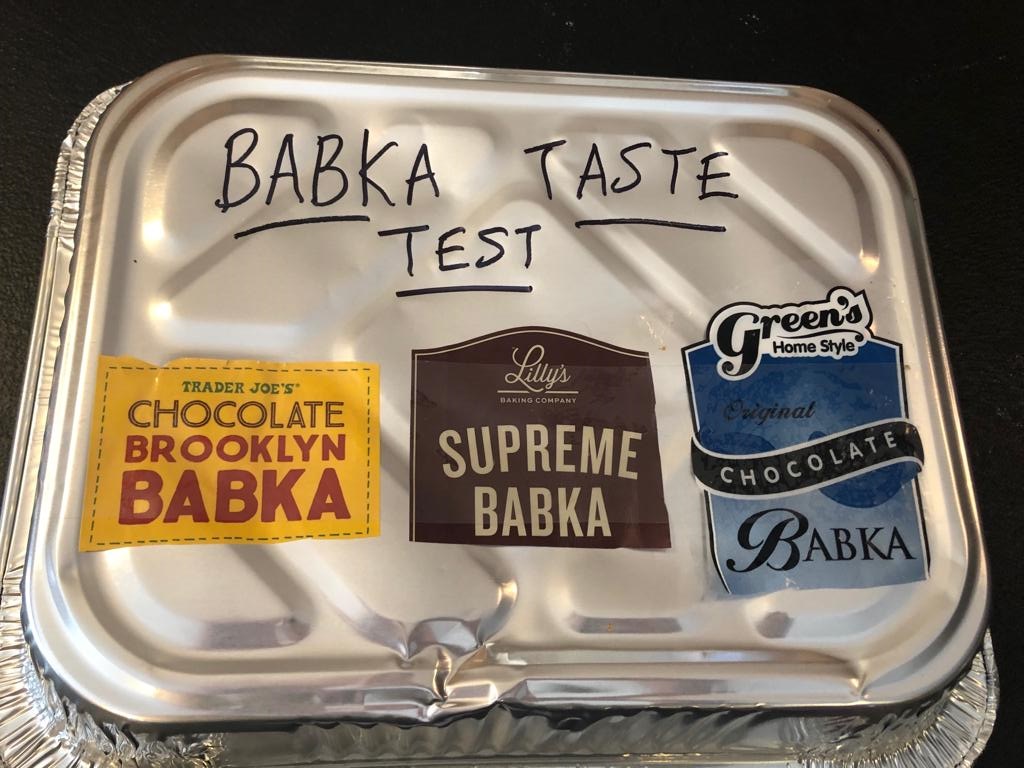 We had a Babka Taste-Testing table on campus this week featuring 3 locally available Babkas: Green’s of Brooklyn (available at the Kosher Price Chopper in Colonie), Trader Joe’s Babka, and Lilly’s Bake Co Babka (available at BJ’s Wholesale Club). The table was a lot of fun, we had students and faculty tasting, enjoying and voting, and they put Green’s Babka in first place.
We had a Babka Taste-Testing table on campus this week featuring 3 locally available Babkas: Green’s of Brooklyn (available at the Kosher Price Chopper in Colonie), Trader Joe’s Babka, and Lilly’s Bake Co Babka (available at BJ’s Wholesale Club). The table was a lot of fun, we had students and faculty tasting, enjoying and voting, and they put Green’s Babka in first place.
But our “Food for Thought” campus tables always have a message. What’s there to learn from a Babka pastry?
Here’s the thing that differentiates Babka from similar Jewish (chocolate-filled) layered pastries like Rugelach or Kokosh cake: The others have layers of alternating pastry and filling that are fixed in place. The top layer stays at the top, the bottom or innermost layers stay where they are. It’s stratified strata preserved in place. Babka defies such strata. By design and definition, Bakba is twisted and turned inside out and upside down, the top layers work their way to the bottom and bottom to the top, interwoven and braided, what is at the top of one slice is at the bottom of the other.
Each pastry style teaches us something. Yes, there’s a need for borders, parameters and strata, where things are best in their own space, and thrive best within their own identity and placement. But there are also a time and place for the interconnectedness and interwoven style of a Babka!
Let’s take (Torah) study for example. One uniquely wonderful aspect of the Rebbe’s Torah study style was how all areas of Torah, its practicum and theory, legal and mystical, broad themes and narrow issues, are all interwoven and interconnected. Current events was part of it, too. Integrated, one unified system encompassing so many systems and styles. “Torah Achas!” One-Torah, the Rebbe called it. Not fragmented bits each compartmentalized into its own narrow categories. But Babka, where mysticism and practical observance, spiritual meanings and biblical stories, legal analysis and emotional experience all harmonized and came together as one.
Just imagine your class load at college. In one semester, its possible to do a math or science, alongside a humanities class, maybe theater or a language, and some finance or business. Totally different areas of learning, each with their own style and approach. Imagine if you had to write a paper weaving all of it together? That was the Rebbe’s style of Torah study. The Babka method!
